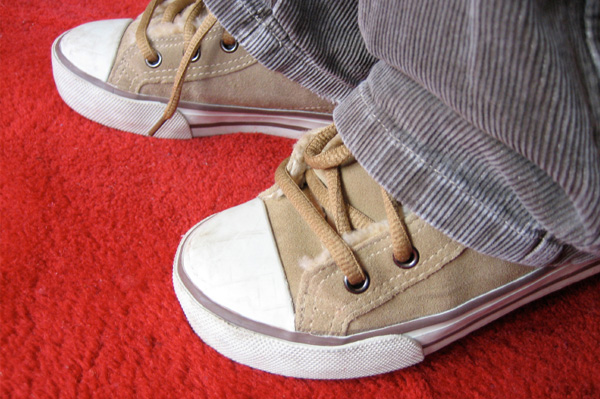 As the ball drops and rings in another exciting New Year, many enthusiastic revelers will sport their favorite pair of sassy sling-backs and other types of fashionable high heels. However, women, myself included, often pay a hefty price for their New Year’s footwear – resulting in blisters, arch and heel pain and much more! Therefore, start the New Year off on the right foot with these sole-saving, New Year’s footwear solutions from the American Podiatric Medical Association:
As the ball drops and rings in another exciting New Year, many enthusiastic revelers will sport their favorite pair of sassy sling-backs and other types of fashionable high heels. However, women, myself included, often pay a hefty price for their New Year’s footwear – resulting in blisters, arch and heel pain and much more! Therefore, start the New Year off on the right foot with these sole-saving, New Year’s footwear solutions from the American Podiatric Medical Association:Problem: Burning sensation on the balls and toes of the feet.
Solution: Heaven 4 Toes’ Alba Round Toe Cushion.
The first-ever soft cushion insert designed especially for toes. These toe cushions are made of durable polyurethane for long-lasting comfort, and are virtually invisible in any pair of haughty heels. These toe cushions help to protect against painful skin abrasions and help to quell irritation and discomfort caused by friction.
Problem: Shoe soles hard on the feet, especially the heels.
Solution: SOLE Custom Footbeds, a product designed to provide custom-fit shock absorption in footwear. SOLE Footbeds feature a deep, cushioning heel cup that help to protect tootsies on the dance floor.
Problem: Slingbacks can dig deep into heels, leaving blisters and painful abrasions.
Solution: Provide a protective barrier between the strap and your skin by using moleskin or FootPetals’ Strappy Strips to prevent blisters and strap slippage, so you can comfortably
party into another successful New Year.
Follow these tips provided by APMA and dance into the New Year with happy, healthy feet, however if foot pain persists please contact our office, 440-946-5858, for an appointment.























